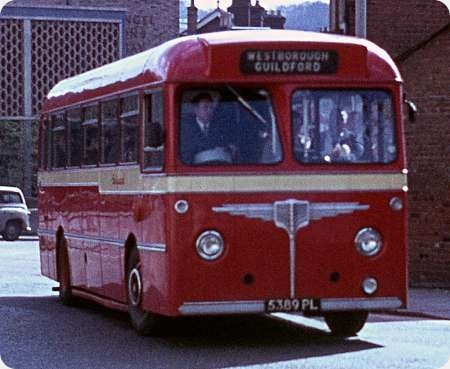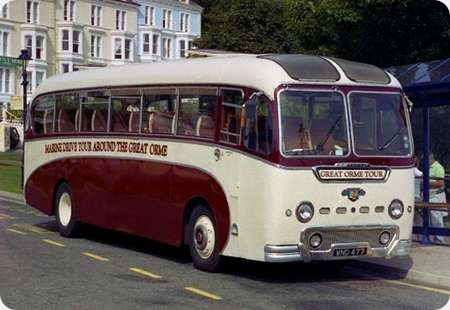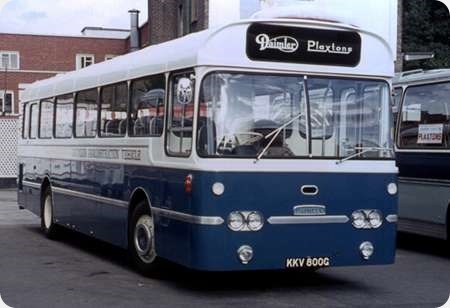
Safeguard Coaches (Guildford)
1962
AEC Reliance 2MU3RV
Willowbrook B45F
In October 1962, AEC Reliance 200 APB (Safeguard – AEC Reliance – 200 APB) was
despatched to Safeway of South Pertherton, Somerset, and replaced by Willowbrook B45F bodied Reliance
5389 PL. The firm still runs a bidirectional circular service in Guildford which is a development of the
Westborough service on which 5389 PL is seen operating in 1967.
Photograph and Copy contributed by Roger Cox
31/10/22 - 07:32
200 APB returned to Safeguard and has become their signature
preserved bus which they roll out for service on significant occasions.
John Lomas

Alpine Travel
1958
Leyland Tiger Cub PSUC1/2
Duple Britannia C41F
Photographed in Llandudno some ten years ago is this Hughes Bros Alpine Tours Tiger Cub WND 477, which
started life in August 1958 with Spencer Tours of Manchester. This firm merged with Smiths of Wigan
which later became part of Shearings. On my several visits to Llandudno over past years it has always
been this coach waiting in readiness for its Great Orme trip, and I have never encountered its fellow
Tiger Cub BCJ 710B with Harrington Grenadier C45F coachwork of July 1964.
Photograph and Copy contributed by Roger Cox

Daimler Transport Vehicles
1968
Daimler Roadliner SRC6/SRP8
Plaxton DP53F
The rear engined Daimler Roadliner powered by the compact and powerful Cummins V6-200 emerged in 1964,
but production did not really get under way until 1966, with West Riding, Black & White and Potteries
being early users of the type. Reliability problems with the engine and toggle link suspension soon
became apparent, and operators began cancelling their orders in the light of service experience. In May
1968 Daimler became part of the British Leyland Motor Corporation, and the Roadliner was offered with
the option of the Perkins V8-510 engine with hopes of improved reliability. A new Plaxton bodied
Roadliner demonstrator, KKV 800G, still with the troublesome Cummins engine, was built in August 1968.
This bus subsequently received the Perkins 8 cylinder power unit, probably before its appearance as
shown in the Demonstration Park at the 1968 Olympia show. The Perkins option did not save the Roadliner
and only some 33 SRP8 examples were built. KKV 800G subsequently entered the City of Oxford fleet in
1970 as number 639.
Photograph and Copy contributed by Roger Cox



